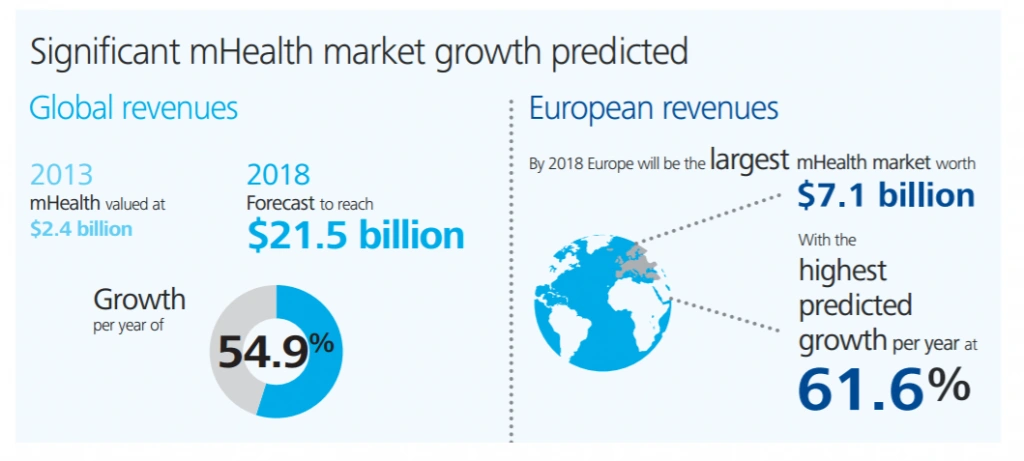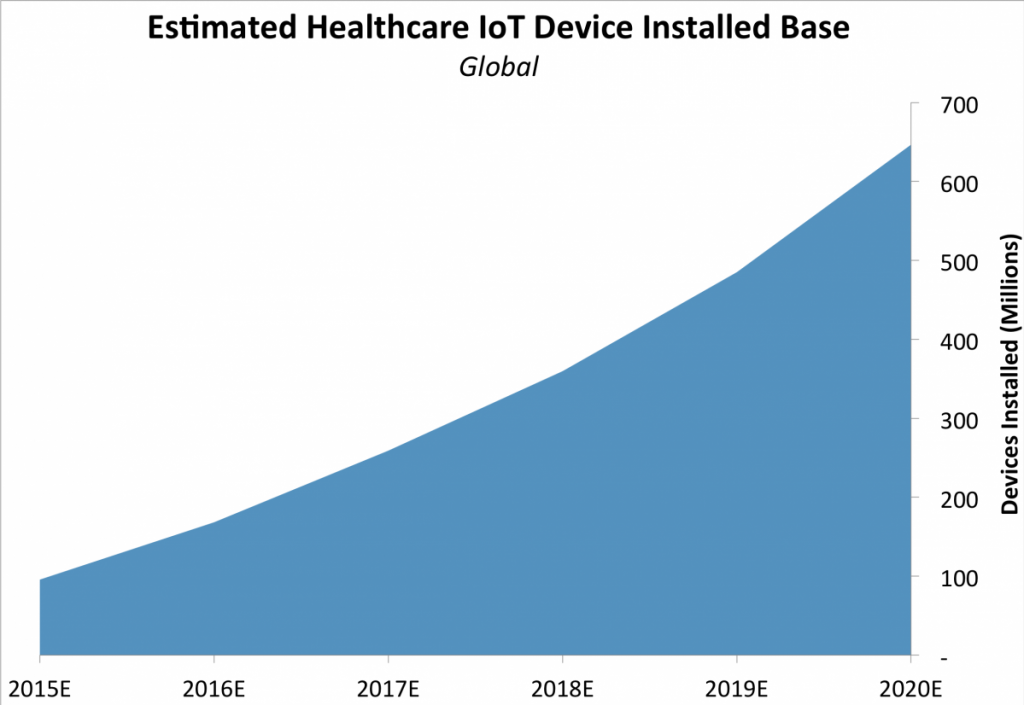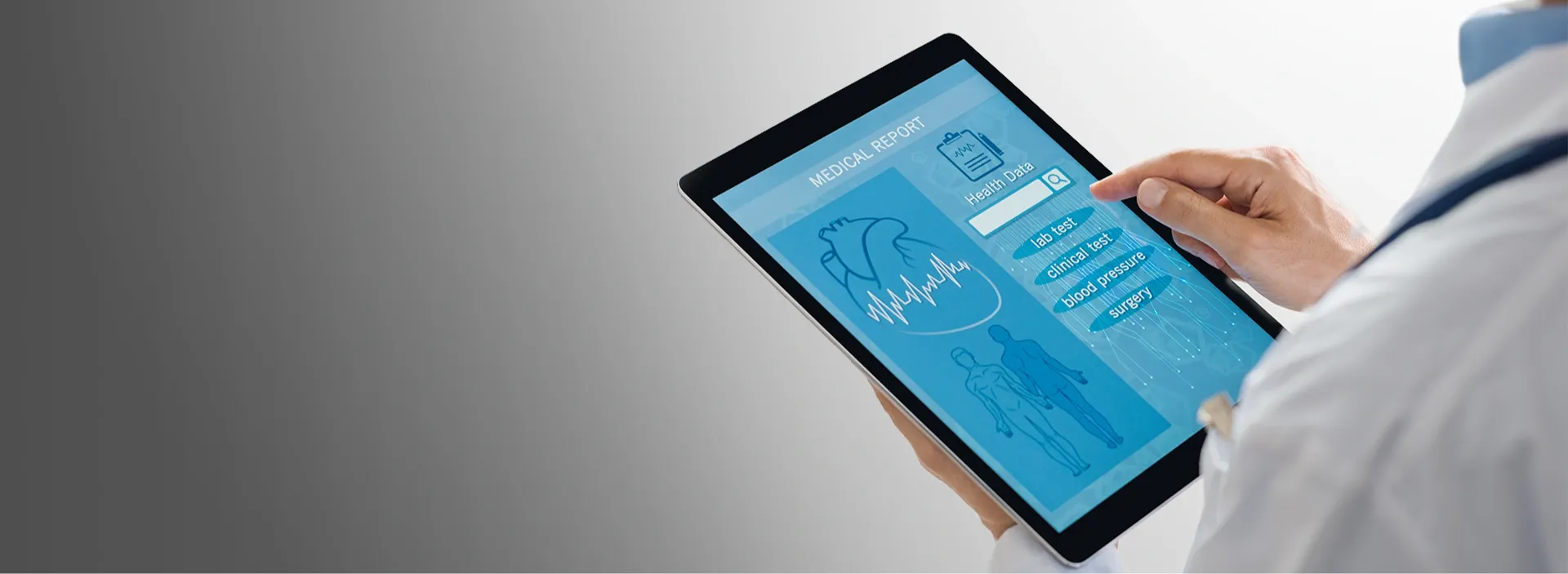Nowadays healthcare organizations increasingly adopt advanced technologies such as Artificial Intelligence, Big Data, VR & AR, blockchain etc. The innovations enable them to provide exceptional diagnostics and patient treatments as well as enhance the efficiency of medical institutions.
According to a recent report by Grand View Research Inc., the global healthcare IT market is anticipated to reach USD 104.5 billion by 2020. Better patient outcomes, reduced treatment costs, elimination of unnecessary hospital procedures with easier hospital workflows, and patient-centric treatment plans are just a few reasons for the successive growth of healthcare technology implementation.
A massive wave of digital transformation is reshaping the industry far and wide. Technologies facilitate many operations in healthcare, thus making treatments, research and education more efficient. For instance, a cancer patient who wanted to enter a clinical trial had to put in a lot of effort and time to find the right fit in the past. Nowadays, they may use a special service which makes this process much more transparent.
For instance, Cure Forward, a healthtech company that cooperates with the Ukrainian IT company N-iX, developed a platform that connects cancer patients and matches them with clinical trials. At the core of their service is the Clinical Trial Exchange (CTX), where patients can host the genomic data about their cancer. There are more examples like this so let's explore the technologies that drive this shift harder than others, the innovations that have the potential to bring tremendous changes to this sphere.

Source: Deloitte Connected Health Report, 2015
1. Internet of Things (IoT) for transforming patient care with smart devices
According to BI Intelligence, the installed base of healthcare IoT devices (not including wearable devices such as fitness trackers) will grow from approximately $95 million in 2015 to 646 million in 2020. Moreover, PWC forecasts that the general market for connected healthcare will grow to an even more spectacular number of $61 billion by 2020. This means that we will witness a 33% annual growth rate for IoT market in healthcare.
The Internet of Things is already affecting the doctor and patient sides in healthcare. Such devices as ultrasounds, thermometers, glucose monitors, electrocardiograms, and others are all getting connected thus enabling patients to track their health. Furthermore, numerous hospitals have started to utilize smart beds which have sensors to the detect the presence of a patient and automatically adjust them to provide proper support without the need for a nurse to intervene. What’s more, the IoT can also help transform patient care at home. For instance, smart medication dispensers at home can automatically upload information to the cloud and alert doctors when patients don't take their medicine. More broadly, the IoT technology implementation in healthcare allows doctors to know of any potentially dangerous patient behavior. And this is just a beginning of the healthtech IoT revolution.

Source: BI Intelligence Estimates, 2015
2. Big Data for incorporating individualized treatments
Big data in healthcare affects industry stakeholders in every capacity. It even helps to predict epidemics, cure disease, and avoid preventable death. According to Becker’s Spine Review , we are going to witness a dramatic growth in the volume of health data over the next several years. Big data affected numerous aspects of healthcare technology implementation including reimbursement models that are shifting toward pay-for-performance, increasing the emphasis on big data tools, infrastructure, and applications for healthcare organizations. Additionally, Becker’s Spine Review suggests that big data analytics will save the US healthcare system $300 billion per year, including saving $165 billion on the clinical operations and R&D activities. So enhanced data and analytics can yield major changes in patient care, monitoring, and decision-making, resource analysis and utilization, as well as patient self-management. Above all, it may help physicians and clinicians to treat patients more effectively and incorporate individualized care.
3. Artificial Intelligence (AI) for automated diagnosis
The AI market for healthcare applications is expected to achieve rapid growth globally with a CAGR of 42% until 2021 . AI in healthcare will assist healthcare practitioners in improving patient outcomes by using medical knowledge which has been thoroughly analyzed and memorized by AI systems. These systems have the potential to provide physicians and researchers with real-time and clinically relevant information from data stored in electronic health records for immediate needs.
Moreover, AI is consistently improving the accurate medical image analysis with help of digital image processing, pattern recognition, and machine learning AI platforms. For instance, a startup Butterfly Network has developed a handheld 3D-ultrasound tool that creates 3D images of the medical image in real time. It sends the data to a cloud service that identifies the characteristics and automates diagnosis. Such type of clinical support is expected to have a significant impact on the overall medical diagnosis market and its growth.
What’s more, severe conditions such as cancer and diabetes are expected to be diagnosed in minutes using cognitive systems that provide real-time 3D images by 2020. They may identify typical physiological characteristics in the scans. By 2025, AI systems are expected to be implemented in 60% of the global hospitals and insurance companies. So AI systems will deliver easily accessible, affordable and quality care to more than 70% of patients.
4. 3D Printing for providing customized care
The 3D printing market for healthcare is expected to be worth approximately $6 billion by 2025 . 3D printing technology has enormous potential to transform healthcare sector due to its ability to be customized. This, in turn, may dramatically reduce surgery times and medical expenses. Some of the leading companies in this field such as Stratasys Ltd., Arcam AB, Organovo Holdings Inc., Johnson & Johnson have already benefited from this innovation. Currently, the largest applications are 3D-printed scaffolds or prosthetics and medical devices, such as dental implants and hearing aids. However, the real game changer for 3D printing will be in human tissue printing: printed livers, hearts, ears, hands and eyes, or building the smallest functional units of tissues, which can lead to the fabrication of large tissues and organs. They can be used as surgical grafts to repair or replace the damaged tissues and organs.
5. Blockchain for increasing health data security
According to HealthIT Analytics, 16% of healthcare stakeholders are planning to use blockchain in 2017. Blockchain technology has the potential to transform healthcare industry by increasing the security, interoperability, and privacy of health data. The implementation of this technology in healthcare can provide a new model for health information exchanges by making electronic medical records more efficient and disintermediated. Furthermore, as blockchain requires each transaction to be validated by every member of the chain before it can be approved, it has the potential to solve the identity management problem which may foster innovation in healthcare. For instance, a system MedRec can manage medical records through the Ethereum blockchain. It gives users access to census-level data of the medical records which makes it both a clinical and research blockchain.
6. Virtual Reality (VR) for innovative therapies
According to Global Industry Analysts, virtual reality in the healthcare market is expected to reach $3.8 billion by 2020 , as the demand for this technology is unlikely to slow down . Now VR is helping medical professionals learn new and improve existing skills in a risk-free environment as well as remotely cure diseases. It is applied in medical training and education enabling health practitioners to learn new procedures, technicalities, usage of equipment, and even interact with patients through human simulation software.
What’s more, psychiatrists may apply VR for virtual therapies which help to deal with patients fears, claustrophobia, anxiety, depression, post-traumatic stress disorder and severe pain cases. For instance, Phobos developed by PsyTech provides an environment where users can face their challenges in a controlled form in a risk-free zone and experiment through VR simulations. Another example is the solution Bravemind by Virtually Better which uses VR exposure therapy for treatment of post-traumatic stress disorders. Such techniques make virtual reality favorable for healthcare professionals, as they enhance the overall treatment experience.

Source: Goldman Sachs
7. Augmented Reality (AR) for new surgical experiences
More and more professionals in the healthcare industry are leveraging their day to day operations with the help of augmented reality. AR apps are used in the healthcare industry for surgical preoperative assessment, medical simulation, minimally invasive surgery and rehabilitation. With the help of AR, a surgeon can now wear smart glasses during the procedure and stay focused on the concrete task, thus minimizing mistakes and reducing the need to multitask more than is necessary. The risks associated with minimally invasive surgery can be reduced by keeping the most important information front and center for the surgeon.
As for patients, Augmented Reality can significantly improve the quality of treatment they receive from their healthcare provider. For instance, jDome BikeAround™ by Brighter is a hemispherical display solution targeted at managing panic disorder and anxiety of elderly people and motivating them to do cardiac and mental training in a safe way. The solution offers the patients to take a ride on a training bike in front of the hemispherical jDome screen where the picture shows streets layout integrated with Google’s map service Google Street View.
Wrap-up
Digital breakthroughs have given healthcare providers advanced tools to research, treat, and communicate. By adopting emerging technologies, they empower patients and carers to access vital data and gain more control over their health. Furthermore, incorporating innovative technologies in healthcare software development may improve connectivity and automation of all processes from monitoring of patients to the provision of treatment. Such technologies as AI, Big data, VR and others may also reduce surgical pain, minimize hospital stay and follow-up, enhance communication, foster recovery time and much more. Therefore, healthcare technology implementation is reshaping the industry and brings real benefits both to patients and healthcare organizations.



